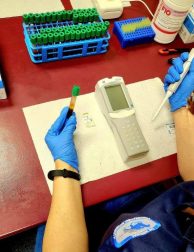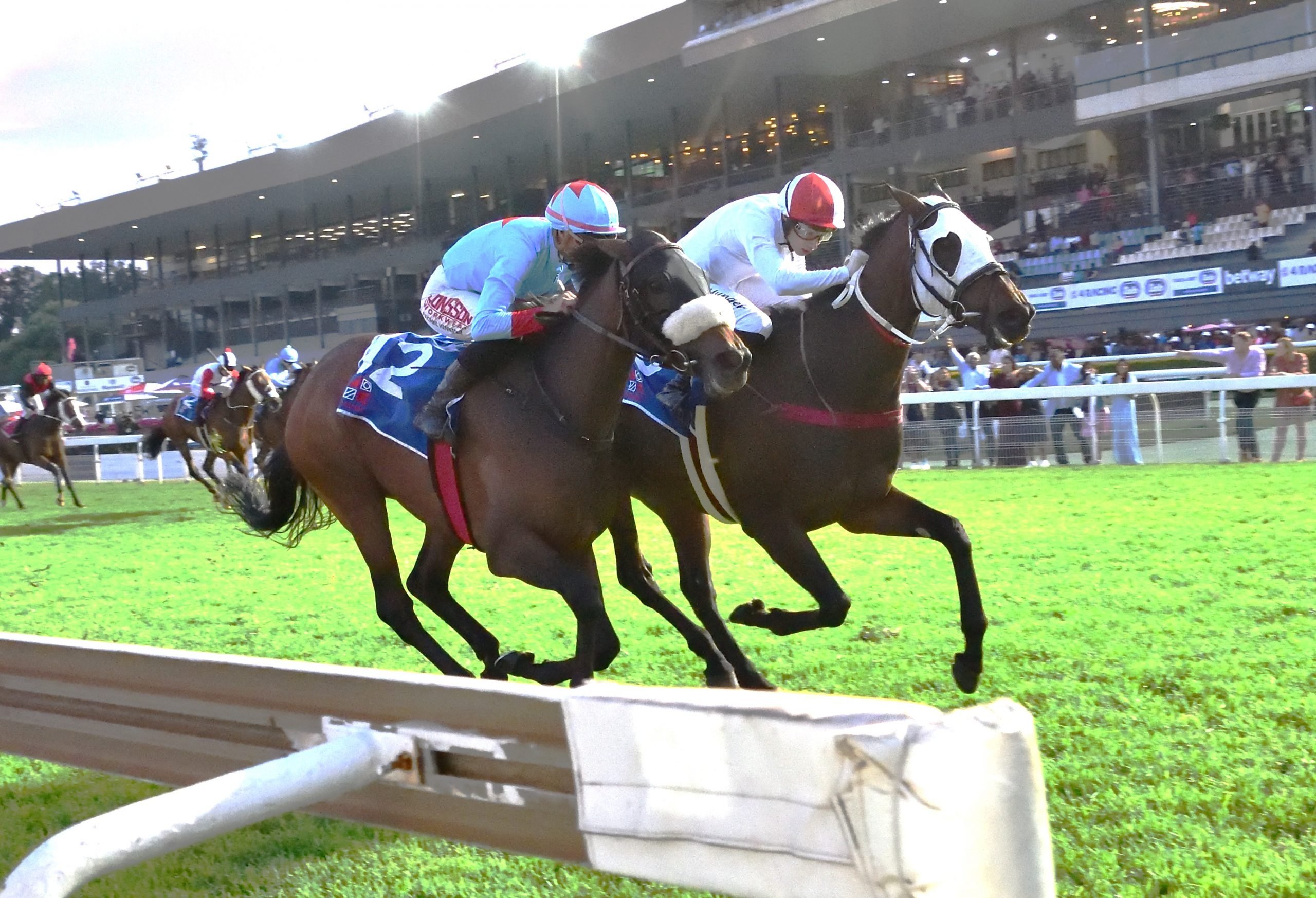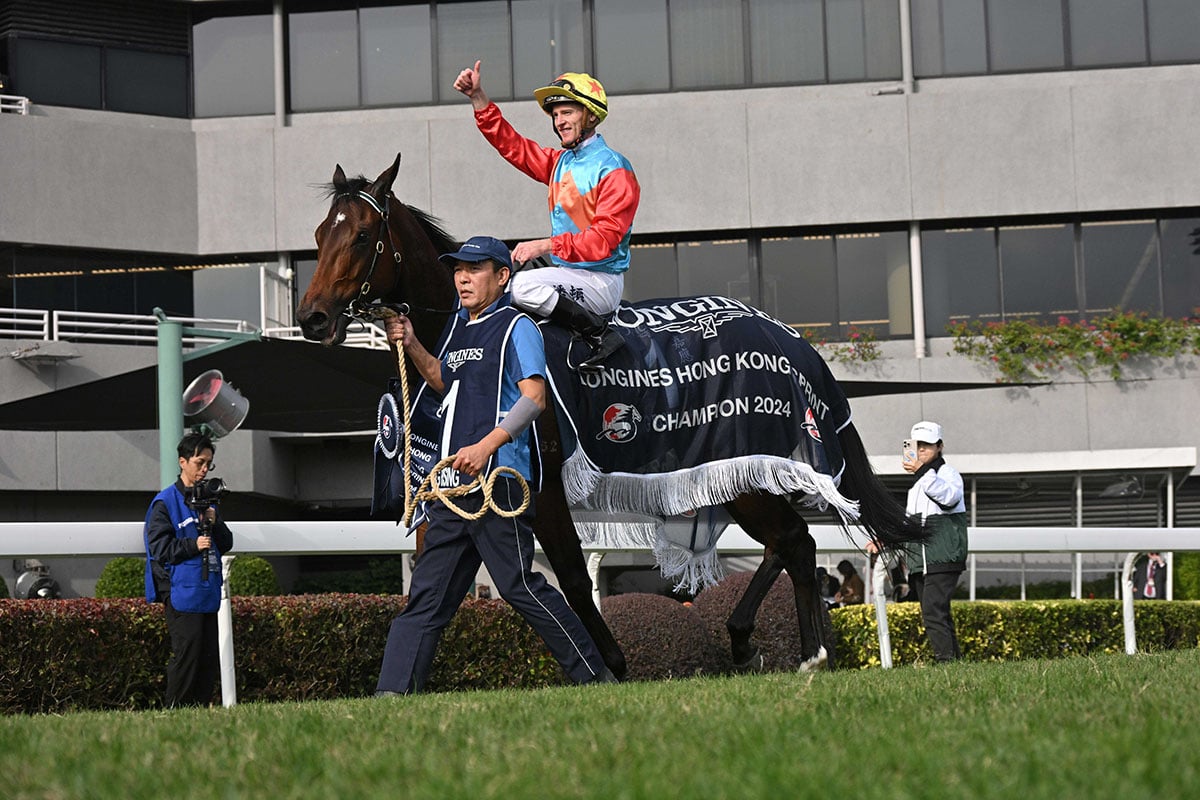It’s a hotly debated topic and there are many questions to ponder. However, there is no doubt that the value of TC02 testing prior to racing is well documented in the literature, and should be encouraged.
But it is the current methodology and interpretation that needs to be revised.
Are the resources allocated to this testing process going to achieve the goal it was intended to?
Dr Ralph Katzwinkel BVSc MBA (Henley UK)
A Veterinary Surgeon with over 40 years experience, and a highly respected personality in the KZN racing community, Summerveld Equine Hospital’s Dr Ralph Katzwinkel has addressed a few suggestions for the racing authorities to consider, and he writes below.
TC02 testing using the handheld device called the I-Stat Alinity machine which tests whole blood is a new method compared to the in-lab test using plasma or serum on the Beckman machine. The Beckman machine has been used in all the research publications over the last 30 years.
Does the new handheld machine give accurate repeatable results when compared to the same blood sample tested on the Beckman machine? If this has been tested the results should be published.
If you run the same blood repeatedly on the handheld machine will the results, be the same each time? If this information is available, it should be shared.
Handheld testing machines round off readings. Is this applicable to the I-stat Alinty machine as well?
The reason for the rounding off is that the handheld devices have been developed for human medicine in emergency situations, where the high or low level is important and not the exact finding up to decimal places. If this is the case this needs to be shared.

TC02 is calculated by the machine based on the PH (Acidity/ alkalinity) of the blood. The PH is influenced by many factors as reported in the literature. It is therefore referred to as an indirect test.
It is very different to testing for a specific drug in the drug testing method used by racing jurisdictions.
I am unable to find any literature on TC02 levels run 10 minutes apart and, in some cases, again at 45 min. What is the normal expected variation of TC02 levels in a healthy horse within 10- and 45-min intervals? Should this information not be made available or studied in the advent of this being new data?
The literature refers to the pCO2 level in the blood being determined by the simultaneous activities of the cellular respiration and the pulmonary gas exchange and is measured by the PH electrode in the testing device. The honest trainer will have no way of knowing the status of the horse he has presented at the races.
Does the confinement and stress of travelling in the small compartments in the floats to the races elevate the TCO2 because of compromised gas exchange? Should this not be tested?
Recommendation
In my opinion and until such time that sufficient scientific data has been collected the level for pre-race testing for TCO2 using the handheld testing on the I-stat Alinity unit, should be set at anything above 38 mmol.
A single test above 38 mmol should be sufficient evidence of alkalizing and result in the horse being scratched.
Further tests at predetermined intervals can be carried out as part of research into the TCO2 levels on race day. Individual horses that test at elevated levels should be investigated further.
All results should be made available to the trainers so that they can learn from this.
During the period of gathering data, it should be done based on scientific protocols in such a way that the information can be published and shared with the scientific community and other racing jurisdictions.

The questions that need to be answered with substantiating proof using the current testing process are as follows:
- Why are the TC02 levels elevated with some horses on the first test?
There are too many horses with different trainers, on different racetracks, different times of the day and different weather conditions to all be caused by “milk shaking” either by stomach tube, or oral
dosing or rectal enema. Bicarbonate in its powder form is not palatable to horses and does not mix well with water. The literature shows that a dose of at least 250 g and as high as 600g needs to be administered to influence increasing TC02. Given as a single dose it takes 5 hours to have an effect when tubed into the stomach. Trainers are not doing this on race days. Using other strong ions such as potassium, Calcium, Magnesium, and lactade in place of, or combined with bicarb can also influence the TC02 levels. However, in large doses these can be dangerous. Weak ions and plasma albumin also influence the TC02 levels indirectly.
- There is very little evidence that “milk shaking” consistently enhances performance when used.
- Trainers do not know why their horses have high values and I as a sports medicine vet with 44 years’ experience am unable to give them an answer.
- Counteracting the acidosis of exercise and high grain diets is integral in ensuring the wellbeing of all horses and especially the racehorse. A recent article (Lindinger 2021) refers to a significant shift to the right for normal TC02 levels to well over 40 mmol in recent years and since the publication of most of the research. The recommended normal range by Lindinger is 23 – 38 mmol. Good training and good horsemanship will automatically result in a healthier horse and as a result higher TC02 levels on average. This is what you want to for your horse to perform at his best.
- One day we may well see horses presented with low TC02 being disqualified on the simple assumption that the hoses have not been well cared for and will not give of their best when racing!
- Why does the TC02 decline after 10 minutes? In some cases, the decline is as much as 2 mmol. This needs to be explained with factual data.
- What is the level of TC02 in horses that are tested as “normal” on the first test when tested again 10 min later? Surely these “normal” horses should also be tested 10 min later. It must be assumed, until proven otherwise that their levels could be going up as much as those that went down (2 mmol)? If this is the case it needs to be explained.
We all know why the TC02 testing was introduced. Is it achieving the intended goal?
The proposed changes to the application of the TC02 testing set out above will stop the negative publicity. It will stop trainers and owners being tarnished for something that is unexplained and out of their control until proven otherwise.
The analogy that one can make is like driving a car without a speedometer and getting caught in a speed trap!
Trainers are seriously stressed to bring their horse to the races and be subjected to a test they don’t know what combination of events can result in an abnormal reading.
In conclusion
Set the TCO2 cut off at anything above 38 mmol. Above 38 mmol there is sufficient data to indicate interference in the horses PH until proven otherwise.
Are these not the horses that the testing process wants to detect and stop from participating?
Gather the data and find out why horses test higher than others when presented at the races and why the values go down within 10 min. Also find out if the ones that tested normal go up after 10 min.
Ed – Dr Ralph Katzwinkel’s letter has been sent to the National Horseracing Authority, inviting comment.










